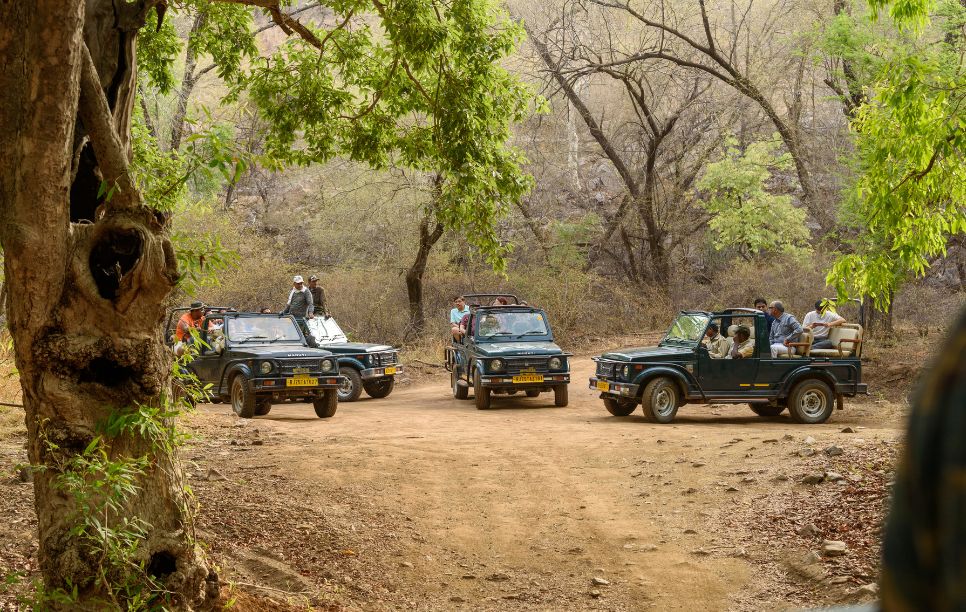
India’s one of the most successful and attractive tiger environments is Ranthambore National Park. Your most excellent opportunity to see and appreciate the tiger in its natural habitat is Ranthambhore National Park. Ranthambore was for many years the hunting ground of Jaipur’s royal family, long before the authorities took control of the forests and outlawed hunting and came under one of the biggest efforts by indian gorvernment in consevation of tigers in india project tiger in year 1973 and since than it has not looked back and set example for others by becoming one of the most densely populated by tigers in india. The park offers a rather romantic mix of temples still in use, wild beauty, fortresses, and the possibility of seeing a tiger in the wilderness.
The tiger lovers will relate their stories of seeing; all of us have seen glimpses of the numerous tiger and wildlife films produced here; the images still linger: of Padma Talao with its water lilies, images of the Ranthambore Fort’s buttresses visible imposingly on the dry Vindhyan hills, pictures of the Jogi Mahal by the water’s edge and the great Banyan tree, maybe India’s largest, literally sprouting from it… Add the tiger, and everything is set. Perfect image. But this is the driest part of a tiger’s range, so it provides the most incredible visibility. Experts say that in Ranthambore, it is far simpler to see a tiger than in Corbett or down South.
Look out for the elusive leopard besides the tiger, especially close to the park entrance along the cliffs that follow the road.
Birds and owls are also worth keeping an eye on. Because night driving is forbidden inside the park, drives taken outside the protected area may provide great sightings of hyenas, foxes, owls, porcupines, jungle cats, black-naped hares, nightjars, and possibly even leopards.
Ranthambore National Park, located in Rajasthan, is situated at the intersection of the Aravali and Vindhya hill ranges. It boasts one of the best wildlife environments in Rajasthan. With the increase in the infrastructure of roads, trains and airports, Sawai Madhopur have a very good connectivity to both the major towns of Delhi and Jaipur. Ranthambhore National Park covers 1334 square kilometres.
Initially known as Sawai Madhopur Sanctuary, the park was later designated by the government as one of India’s Project Tiger reserves in the year 1973. Furthermore, Ranthambore was designated a national park in 1980. At the same time, the surrounding woodlands were designated as the Sawai Man Singh Sanctuary and the Keladevi Sanctuary.
The forest has been in good hands ever since, and the flora and fauna have grown in their natural surroundings.